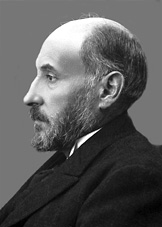The number of Facebook friends you have is correlated to the size of your amygdala, the center used to process the memory of your emotional reactions in your brain, according to a new study published in Nature Neuroscience. The volume of your amydala has been connected to the size of the circle of those you come in contact with even with nonhuman primate species before, so Kevin Bickart and his coauthors took the idea and tested it out on people who interact with people on Facebook.
Using 58 adults with varying sizes of Facebook friends, the scientists figured out how many people each individual involved in the study regularly interacted with. Then, they determined how many different groups of Facebook friends the person was in contacted with. Those two data points were compared to the volume of the amygdala and hippocampus, the later of which should not change in size depending on the size of the social network. The results showed that the size of a person's amygdala increased with more friends and more complex social networks. So much for saying that people you interact with on Facebook aren't really your friends. And, even if we might not know them personally, our brains are definitely making an emotional connection.
Read more: http://techland.time.com/2010/12/28/study-more-friends-on-facebook-equals-a-bigger-amygdala-in-your-brain/#ixzz19g9FcFoJ
Using 58 adults with varying sizes of Facebook friends, the scientists figured out how many people each individual involved in the study regularly interacted with. Then, they determined how many different groups of Facebook friends the person was in contacted with. Those two data points were compared to the volume of the amygdala and hippocampus, the later of which should not change in size depending on the size of the social network. The results showed that the size of a person's amygdala increased with more friends and more complex social networks. So much for saying that people you interact with on Facebook aren't really your friends. And, even if we might not know them personally, our brains are definitely making an emotional connection.
Read more: http://techland.time.com/2010/12/28/study-more-friends-on-facebook-equals-a-bigger-amygdala-in-your-brain/#ixzz19g9FcFoJ
http://www.nature.com/neuro/journal/vaop/ncurrent/full/nn.2724.html#/affil-auth


 4 (APOE4) genotype could be seen independent of Aβ plaque toxicity by examining resting state fMRI functional connectivity (fcMRI) in participants without preclinical fibrillar amyloid deposition (PIB–). Cognitively normal participants enrolled in longitudinal studies (n = 100, mean age = 62) who were PIB– were categorized into those with and without an APOE4 allele and studied using fcMRI. APOE4 allele carriers (E4+) differed significantly from E4– in functional connectivity of the precuneus to several regions previously defined as having abnormal connectivity in a group of AD participants. These effects were observed before any manifestations of cognitive changes and in the absence of brain fibrillar Aβ plaque deposition, suggesting that early manifestations of a genetic effect can be detected using fcMRI and that these changes may antedate the pathological effects of fibrillar amyloid plaque toxicity.
4 (APOE4) genotype could be seen independent of Aβ plaque toxicity by examining resting state fMRI functional connectivity (fcMRI) in participants without preclinical fibrillar amyloid deposition (PIB–). Cognitively normal participants enrolled in longitudinal studies (n = 100, mean age = 62) who were PIB– were categorized into those with and without an APOE4 allele and studied using fcMRI. APOE4 allele carriers (E4+) differed significantly from E4– in functional connectivity of the precuneus to several regions previously defined as having abnormal connectivity in a group of AD participants. These effects were observed before any manifestations of cognitive changes and in the absence of brain fibrillar Aβ plaque deposition, suggesting that early manifestations of a genetic effect can be detected using fcMRI and that these changes may antedate the pathological effects of fibrillar amyloid plaque toxicity.